VFX supervisor Colin Davies from Spin VFX talks about building and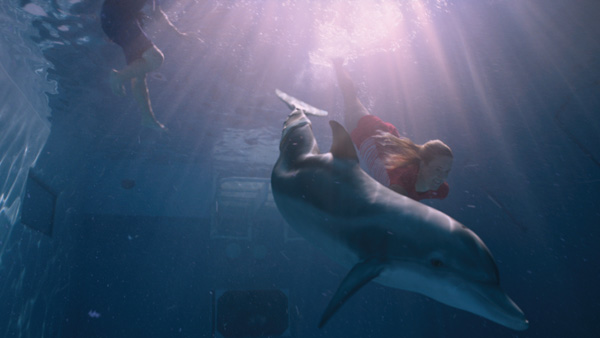
animating photoreal 3D dolphins and the light and water interactions
that bring them to life alongside live dolphins.
Spin VFX Makes a Splash with Water, Light & Creature FX for ‘Dolphin Tale 2’ |
| ‘Dolphin Tale 2’is a family drama feature about an injured wild dolphin living at Clearwater Marine Hospital and aquarium, a rehabilitation centre in Florida for aquatic animals. VFX supervisorColin DaviesfromSpin VFXand production VFX supervisorBob Munroetalk about building and animating photoreal 3D dolphins and the light and water interactions that bring them to life alongside live dolphins. |
 |
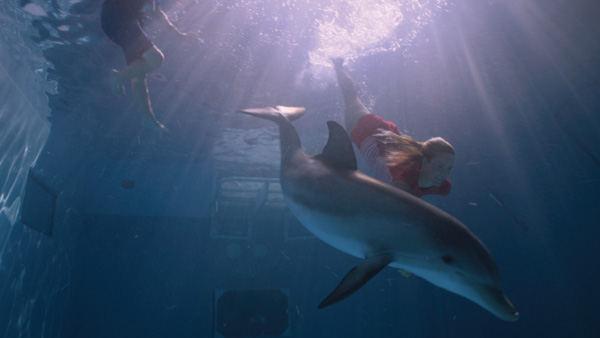 |
|
The dolphin characters of this story are real dolphins actually living at Clearwater Marine Hospital, a active working aquarium. Although the production VFX supervisor Bob Munroe was carrying on in his role from the first movie, Spin VFX based in Toronto, Canada, only entered the production at this point. Spin’s VFX supervisor Colin Davies joined him on location in Florida at Clearwater Marine Hospital for part of the on set supervision work prior to the start of principal photography. At the AquariumBob explained that while dolphins are intelligent and friendly, it’s difficult to persuade individuals to cooperate in a linear, story-like scenario, and visual effects helps work around this fact. “When the ‘stars’ got tired or restless we could use available, enthusiastic dolphins to stand in for them and then adjust their attributes in post,” he said. |
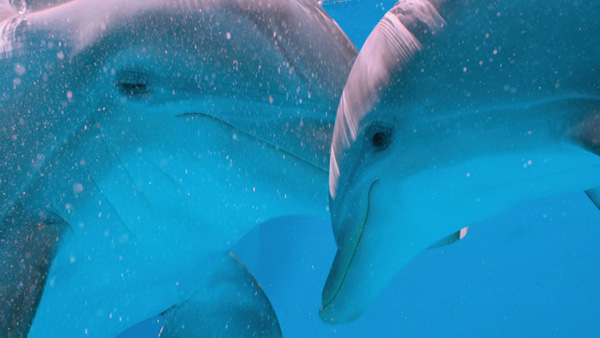 |
|
Bob put a lot of effort into surveying every aspect of the hospital areas used as the set and the dolphins themselves, taking complete, precise measurements. An animatronic dolphin was built to scale to use as a reference object in the images, and exhaustive texture shoots were done for the dolphins’ skin. The interiors of the tanks were measured and all details of the tanks photographed. For the animators’ reference, the aquarium’s in-house videographer shared his huge library of footage of the same dolphins that were appearing in the movie, and Bob shot further video of them as well. |
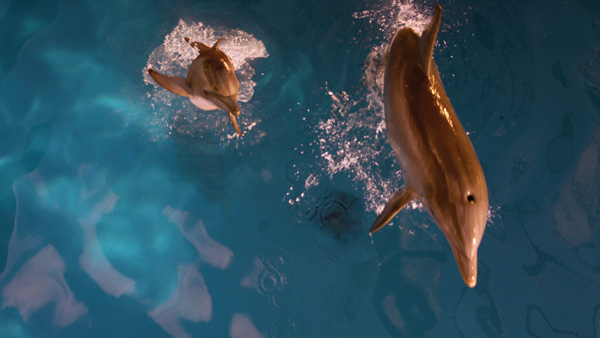 |
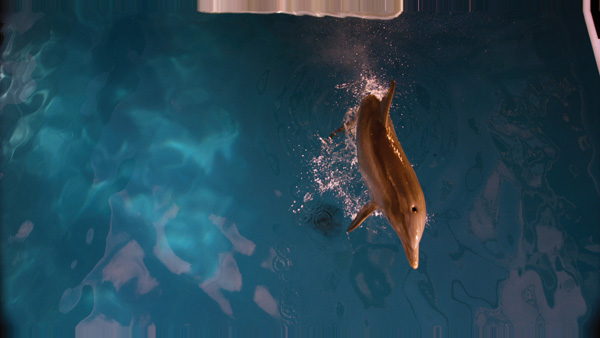 |
Perfect SkinFor part of this pre-production research, Colin Davies also visited the set and worked in the pool directly with the dolphins. “In several shots, our CG dolphins were in frame with real dolphins. There was no where to hide. We had to get the performance, the look and the integration just right or the shot wouldn’t work,” he said. “It was important to understand how dolphin skin behaves and responds to water. Instead of letting the water bead up, it had a fine micro-pore surface that retains water like a sponge and. At the same time, the wet skin serves as a sun block. The way it affects the water dispersion produces very distinctive light effects that I had to see myself to understand.” Armed with all of this set information and reference, plus the typical lens data and HDRIs, the Spin VFX team at the studio could build and light extremely accurate environments in which to test all of their looks and assets. Carrying out all of the renders within those environments helped them produce physically plausible results from their shaders, which was critical for realism. |
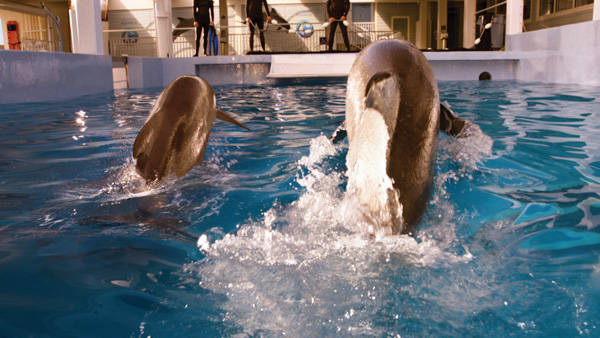 |
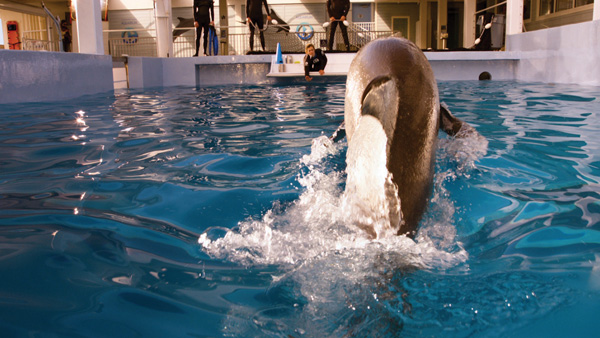 |
|
Dolphin Manoeuvres“Actually, not very much movement shows externally, so you have to study their underwater mechanics, avoid over-animating and strike a balance to get just the right flick of the tale. An animator sometimes tries to anthropomorphise a creature for the sake of the story but, while these dolphins do have distinctive personalities, we had to make sure the animation was absolutely real,” Colin said. “Less can be more sometimes, and imply a thinking process. As dolphins are creatures we didn’t have any associated facial movement to help with story points, either.” |
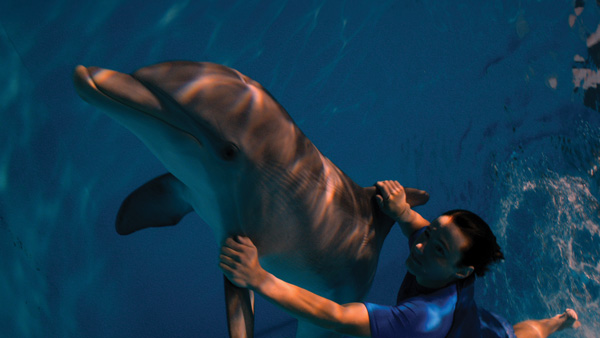 |
|
Spin VFX has a lot of experience working with water after completing several different project with water as a key element. On this movie, the proximity of the camera introduced an extra challenge. During look development, they wanted to carry out their water simulations, created in Houdini and rendered in Mantra, at a high enough resolution to give them a useful preview of the result, but still have the time to run through enough iterations to get the look they wanted. |
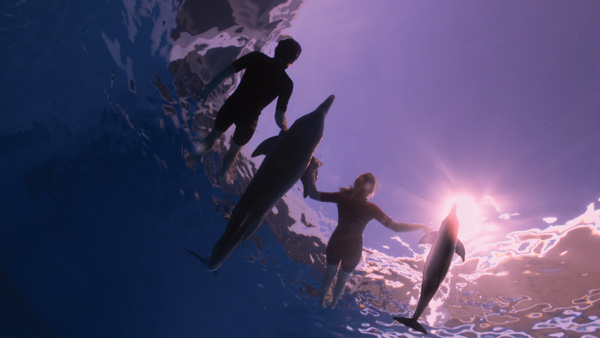 |
Faster Lighting PipelineThen, once they were satisfied with the simulation, they had the complication of raising the result to full resolution, which stretched their software to the limit of its cache size. Some of the water simulations were huge and took days to render. Colin said, “Our effects supervisor Tim Sibley was very good choosing the right resolution to work in at any point in the process, which was important to prevent us getting behind. If your test resolutions aren’t high enough it’s easy to judge incorrectly about how a simulation will look in the final render.” To handle the many light interactions accurately, lookdev and lighting supervisorDoug Addywith Spin’s lighting team used KATANA, connecting to their renderer, RenderMan. “On this project we were taking advantage of KATANA as a pipeline tool, making scene assemblies and scene updates much quicker, and making changes to backgrounds and animation fairly easy. Once we know the lighting is working correctly in a particular shot, we can template this and brig it into other shots,” said Colin. |
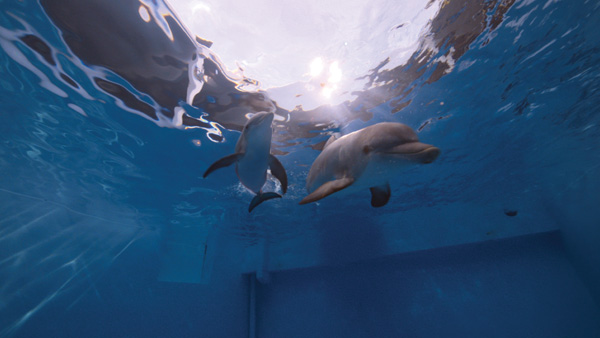 |
|
Water, Colour & LightThe project’s colour workflow was interesting for several reasons. One was the need to photograph and re-create scenes above and below the surface of the water, another was the use of more than one camera type and another was working with DPDaryn Okada, who wanted to use a linear colour pipeline. |
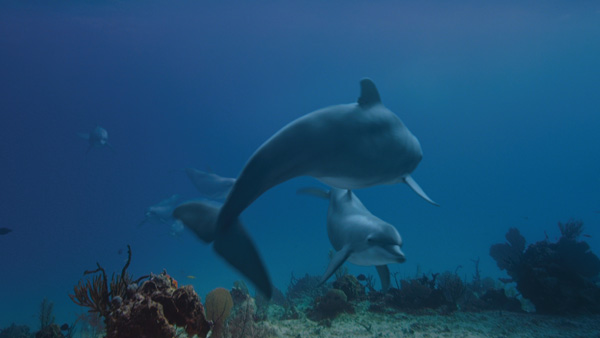 |
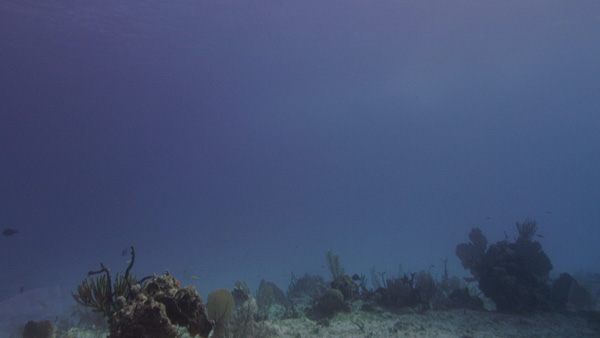 |
|
Daryn used an LUT from Technicolor that allowed them to work with linear EXR files natively. Daryn did quite a bit of grading on set, and Spin VFX could use the same colour set-up to view their renders in NUKE, showing them how Daryn envisioned the images. “This isn’t so unusual nowadays, but it is an example of a film taking a step closer to an ACES type of colour pipeline - not exactly, but a close approximation,” said Colin. “It also meant we could work with images that were beautifully shot as well as graded by the DP, retaining all colour depth and dynamic range. |
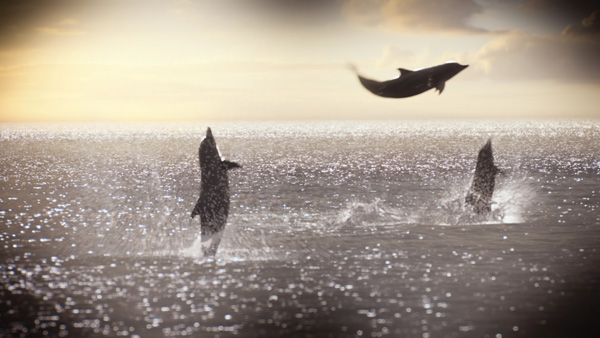 |
|
Words: Adriene Hurst |


















